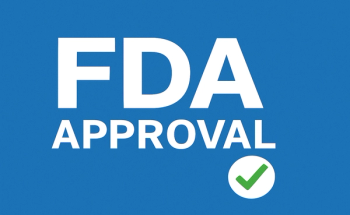
Study Summary: Pilot test of a Mobile App to Improve Treatment Adherence in Young Patients With Migraine
Background
Although adherence to preventive medications is a cornerstone of migraine management, treatment adherence is often low among the adolescent and young adult (AYA) patient population. Based on previous research, mobile health technologies have demonstrated benefit in improving health behaviors and clinical outcomes among young patients. Although the results of studies have shown that psychological interventions may positively impact adherence to medication among young patients with chronic diseases, few studies have investigated their use in young patients with migraine. To address this knowledge gap, Ramsey and colleagues set out to investigate the effect of using a mobile intervention on medication adherence among young patients with migraine.1
Study Design
Researchers conducted a pilot study to assess the usefulness of a mobile application and progressive reminder system (PRS) in improving medication adherence among AYAs with migraine. They also sought to identify factors that might predict changes in treatment adherence, compare electronically monitored and self-reported mobile application- or phone-based adherence rates, and examine patients’ satisfaction with using the mobile tool.1
This 16-week study, which took place in 2016 at a pediatric headache clinic in the United States, enrolled patients 13 to 21 years of age who were fluent in English, diagnosed with migraine according to the criteria from the International Classification of Headache Disorders (ICHD-3 beta), taking preventive medications in solid oral dosage form, and had internet access via a mobile wireless plan or Wi-Fi. Patients were excluded from the study if they had serious mental illness, developmental delay/impairment, or continuous migraine for a month without relief.1
Electronically monitored adherence was measured using a medication bottle with a microprocessor embedded in the cap that recorded each bottle opening. Patients downloaded the MedaCheck app, a mobile application that could be customized based on patient medication regimen, onto a mobile device. The application prompted patients with reminders to take their medications and allowed them to self-report adherence. If a patient did not record taking a medication dose, the PRS activated after 1 hour and generated a reminder phone call from a call center. If the patient still did not report taking their scheduled dose of medication, the call center then contacted a caregiver to request additional intervention.1
Upon joining the study, patients entered an 8-week run-in phase during which the researchers used electronic monitoring to determine the patients’ baseline adherence rate. Study staff then introduced patients to the mobile application and PRS. Next, patients entered the 8-week active intervention phase of the study, during which they used the mobile application, PRS system, and electronic medication monitors. Adherence was assessed at 4 and 8 weeks post implementation of the intervention via electronic monitoring of bottle cap opening.1
The researchers collected patients’ demographic and clinical data via intake forms and chart review. Baseline migraine disability was measured using the Pediatric Migraine Disability Assessment, which considers the effects of migraines on home, school, and social functioning during the previous 3 months. At the end of the study, the utility of the mobile application and PRS were quantified with a brief questionnaire. Statistical analyses were used to calculate the needed sample size and evaluate the data.1
Results
The study included 35 patients with migraine and their caregivers. The participants had a mean age of 15.4 years and most were female (77%) and white (89%). The majority of patients were iOS users (83%). Android users (17%) experienced unexpected technical problems with their mobile application and were therefore not included in the PRS analyses. Android and iOS users were well matched at baseline; the only difference between the groups was that Android users tended to be older (P = .041).1
Baseline medication adherence, measured with the electronic monitoring system, was high, with a mean of 81.9% and a median of 87.0%. Overall, Ramsey and colleagues reported that almost half of the study’s participants showed some improvement in medication adherence after using the application. Compared with the baseline rate (81.52%), patients’ adherence rates significantly increased during the first half of the intervention phase (87.45%, P = .026). However, their rates fell below baseline during the second half of the intervention phase (78.69%, P = .25) (
Researchers observed patterns in adherence based on patients’ baseline medication adherence rates, which were classified as either low (<88%) or high (≥88%), and performed a post hoc analysis. Among 18 patients with low baseline adherence (70.68%), a significant improvement during the first half of the intervention phase was observed (83.01%, P = .007), but decreased rates were observed during the second half of the intervention phase (70.96%) (
Investigators noted that app-only self-reported postintervention adherence (60.4%) was significantly lower than both electronically monitored adherence (84.1%, P <.001) and PRS adherence (78.7%, P <.001). However, there was no significant difference between electronically monitored adherence and PRS adherence (P = .15).1
In terms of acceptability and usability, 80% of patients were satisfied with the mobile application, evaluating it as being easy and convenient to use. Additionally, more than half of the patients and more than 70% of caregivers reported the reminder calls as being helpful.1
Conclusions
The results of this study suggest that mobile applications and PRS interventions have the potential for improving medication adherence among AYAs with migraine and that individuals in this population with lower adherence and older age might benefit most. Investigators speculated that older adolescents may be more prepared to participate in their healthcare decision making and may use their phones more frequently compared with younger adolescents. Additionally, authors proposed that involving caregivers in these application-based interventions may increase young patients’ adherence to their migraine treatment.1
Ramsey and colleagues noted several limitations of their study, including a small and homogeneous sample of patients, the majority of whom were white, female, and affluent. In addition, the study took place at a single site, and in terms of analyzable results, all patients used iOS devices. For these reasons, study authors acknowledge that it may be difficult to generalize the results to a larger population of young patients with migraine.1
Reference
1. Ramsey RR, Holbein CE, Powers SW, et al. A pilot investigation of a mobile phone application and progressive reminder system to improve adherence to daily prevention treatment in adolescents and young adults with migraine [published online January 3,2018]. Cephalalgia. doi: 10.1177/0333102418756864.
Newsletter
Stay ahead of policy, cost, and value—subscribe to AJMC for expert insights at the intersection of clinical care and health economics.







































